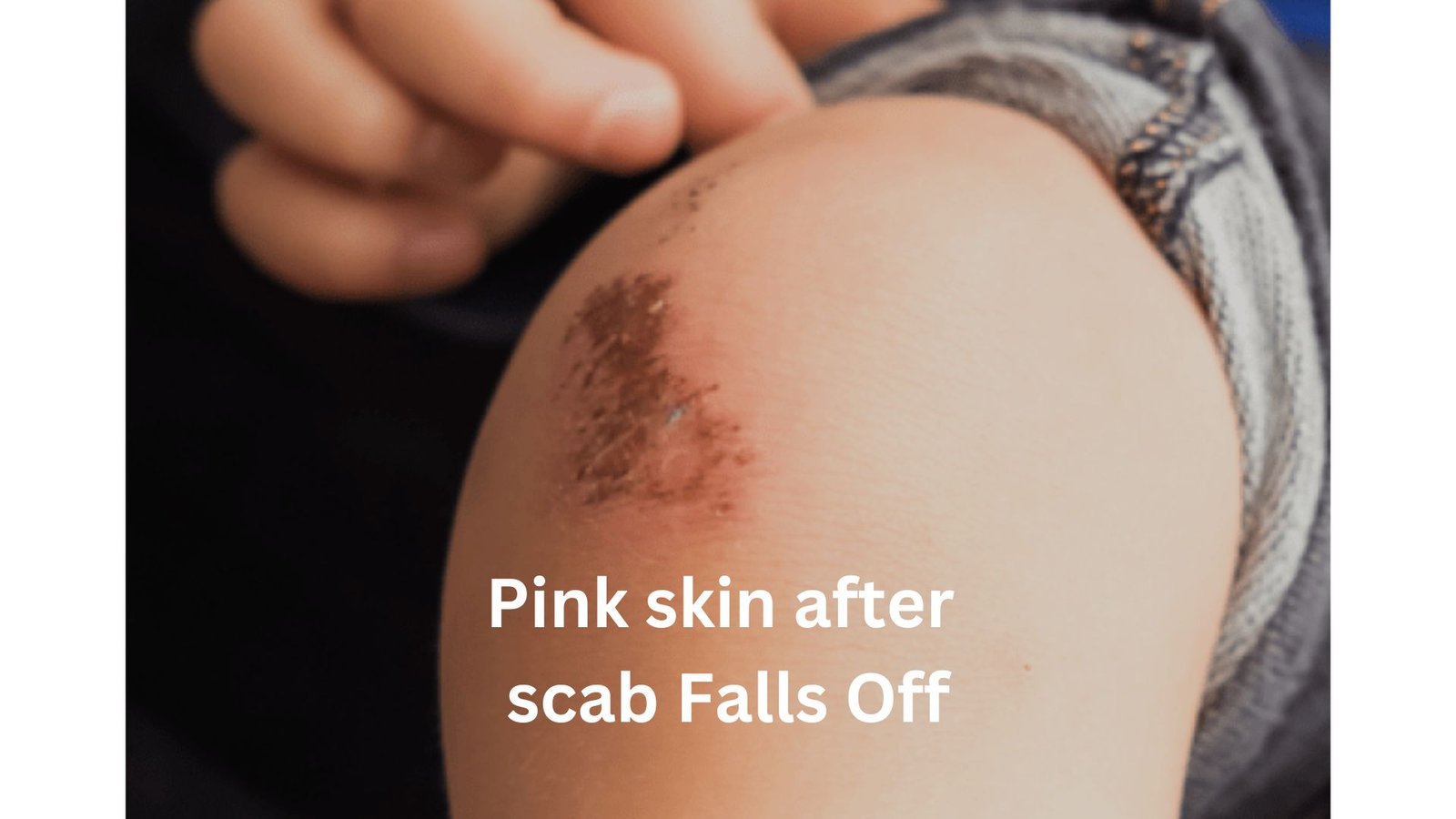Introduction
Dealing with a scab that has fallen off and left a hole in your skin can be concerning, but it’s essential to understand the condition and take appropriate steps for proper healing. In this guide, we’ll discuss the condition, dos and don’ts, and medication options if needed.
When a scab falls off, it’s a sign that the underlying wound has healed to a certain extent. However, if the wound was deep or if the scab was prematurely removed, it may leave behind a small hole or depression in the skin known as Pink Skin. This hole is essentially a pit where new tissue is still forming to fully close the wound.
Dos and Don'ts - Scab Fell Off
Do:
Keep the Area Clean: Gently clean the area around the hole with mild soap and water to prevent infection. Pat it dry with a clean towel.
Protect the Wound: Cover the hole with a sterile bandage or dressing to protect it from further injury and contamination.
Keep it Moisturized: Apply a thin layer of petroleum jelly or antibiotic ointment to keep the wound moist and promote healing.
Monitor for Signs of Infection: Keep an eye out for signs of infection such as increased redness, swelling, warmth, or pus-like discharge. If you notice any of these symptoms, seek medical attention promptly.
Don’t:
Pick at the Hole: Avoid picking at or scratching the hole, as this can delay healing and increase the risk of infection.
Expose to Sunlight: Keep the wound covered and protected from sunlight to prevent hyperpigmentation and further damage to the healing tissue.
Apply Harsh Chemicals: Avoid applying harsh chemicals or products to the wound area, as they may irritate the skin and impede the healing process.
Neglect Follow-up Care: Follow any instructions provided by your healthcare provider for proper wound care and follow-up appointments.
Medication Options
If the hole left by the scab is large or deep, your healthcare provider may recommend certain medications or treatments to aid in healing:
Antibiotic Ointment: If there’s a risk of infection, your healthcare provider may prescribe an antibiotic ointment to apply to the wound.
Topical Steroids: In some cases, topical steroids may be prescribed to reduce inflammation and promote healing, especially if the wound edges are not coming together as expected.
Wound Dressings: Specialized wound dressings or patches may be used to cover the hole and provide a moist environment conducive to healing.
Tissue Fillers: In cases where the hole is deep and significant, your healthcare provider may recommend tissue fillers to help fill in the depression and promote smoother healing.
Additional Tips for Managing a Hole Left by a Fallen Scab
1. Gentle Cleansing: When cleaning the area around the hole, use a gentle touch to avoid disrupting the delicate healing process. Avoid harsh scrubbing or rubbing, as this can further irritate the wound.
2. Change Dressings Regularly: If you’re using a bandage or dressing to cover the hole, make sure to change it regularly to keep the wound clean and prevent infection. Follow any instructions provided by your healthcare provider regarding dressing changes.
3. Protect from Trauma: Be mindful of activities that could potentially traumatize the healing tissue, such as rough sports or activities that involve friction against the skin. Protect the area with a bandage or dressing if necessary.
4. Maintain Hydration and Nutrition: Adequate hydration and nutrition play a vital role in the body’s ability to heal. Drink plenty of water and eat a balanced diet rich in vitamins, minerals, and protein to support optimal healing.
5. Avoid Smoking and Alcohol: Smoking and excessive alcohol consumption can impair the body’s ability to heal and increase the risk of complications. If you smoke, consider quitting, and limit alcohol intake while the wound heals.
6. Monitor for Excessive Bleeding: While some minor bleeding may occur as the hole heals, excessive or prolonged bleeding could indicate a problem. If bleeding persists or worsens, seek medical attention promptly.
7. Patience is Key: Remember that healing takes time, and the hole left by the scab may take several weeks or even months to fully close and heal. Be patient and consistent with your wound care routine, and don’t hesitate to reach out to your healthcare provider if you have any concerns.
Seeking Medical Attention
While most holes left by fallen scabs will heal on their own with proper care, there are instances where medical intervention may be necessary. Seek medical attention if you experience any of the following:
- Signs of infection, such as increased redness, swelling, warmth, or pus-like discharge.
- Excessive or prolonged bleeding that doesn’t stop with gentle pressure.
- Persistent pain or discomfort that doesn’t improve over time.
- Any other concerning symptoms or complications.
Your healthcare provider can assess the wound and provide appropriate treatment to promote healing and prevent complications.
Conclusion
Dealing with a hole left behind after a scab falls off requires patience and proper care. By following the dos and don’ts outlined in this guide and seeking medical attention if needed, you can promote optimal healing and minimize the risk of complications. Remember to be gentle with the healing tissue and give it the time it needs to fully recover.
Faq related to "Scab Fell Off and Left a Hole"
Yes, it’s relatively common for deeper wounds or larger scabs to leave behind a small hole or depression in the skin once they heal. This is typically a sign that the underlying tissue is still in the process of regenerating.
The time it takes for a hole to heal can vary depending on factors such as the size and depth of the wound, individual healing factors, and proper wound care. In general, small holes may heal within a few weeks, while larger or deeper holes may take longer to close completely.
While it’s normal for the healing process to take time, if you notice any signs of infection (such as increased redness, swelling, warmth, or pus-like discharge) or if the hole is not showing signs of improvement over time, it’s important to seek medical attention. Your healthcare provider can assess the wound and provide appropriate treatment if needed.
While you can’t rush the body’s natural healing process, there are steps you can take to support optimal healing, such as keeping the wound clean, protected, and moisturized. Avoid picking at the hole or applying harsh chemicals, as this can delay healing and increase the risk of complications.
If you’re experiencing pain or discomfort around the hole left by a fallen scab, try gently cleaning the area and applying a thin layer of petroleum jelly or antibiotic ointment to keep it moisturized and protected. If the pain persists or worsens, seek medical attention for further evaluation and treatment.
It’s generally best to avoid applying makeup or cover-up over an open wound or healing tissue, as this can increase the risk of infection and impede the healing process. Instead, keep the area clean and protected with a sterile bandage or dressing until it has fully healed.
In most cases, yes, a hole left by a fallen scab will eventually fill in and disappear as the underlying tissue continues to regenerate. However, it’s important to practice proper wound care and seek medical attention if you have any concerns about the healing process.
While it’s not always possible to prevent scabs from leaving behind holes, you can minimize the risk by avoiding picking or scratching at scabs and practicing proper wound care throughout the healing process. Keeping the wound clean, protected, and moisturized can help promote optimal healing and reduce the likelihood of scarring or holes.











